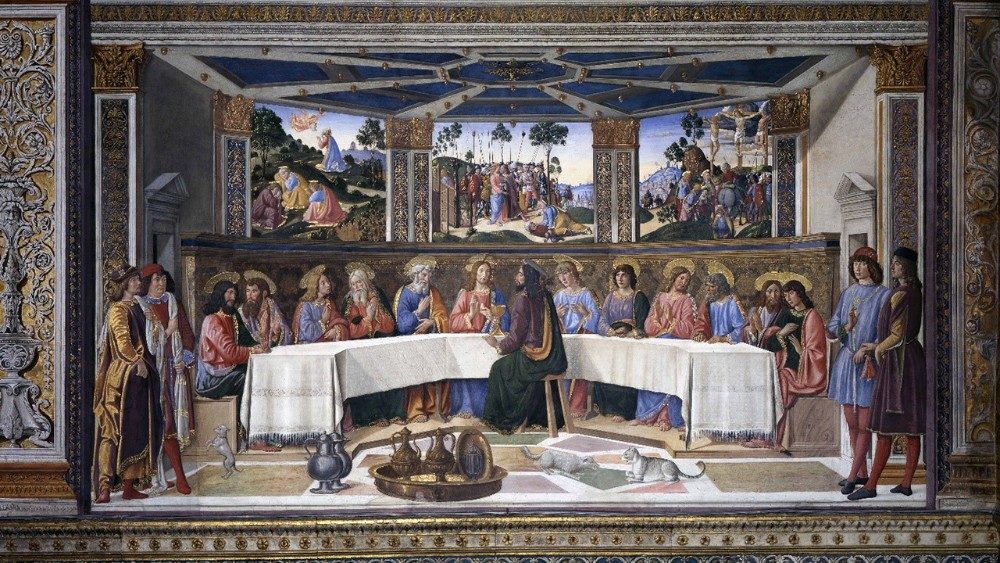Lent at the Vatican Museums: Art for meditation and prayer
By Paolo Ondarza
From the 3 March and continuing for every Friday of Lent, in preparation for Easter, the pontifical collections of the Vatican Museums offer a special guided tour in Italian or English to meditate on the mysteries of faith during Lent
The visit is open to everyone, including families with children, and accessible to people with sensory, motor, and intellectual disabilities.
The aim is to educate visitors on the works and artists that have powerfully depicted the Passion and Resurrection of the Lord over the centuries.
The itinerary will be offered again on March 17, 24, and 31 and can be booked via e-mail at education.musei@scv.va.
The visit begins at the early Christian period with the storied sarcophagi of the first centuries and then passes through the masterpieces of the Painting and Upper Galleries, finishing with the wonders frescoed by the Quattrocentisti and Michelangelo in the Sistine Chapel.
Art and evangelization
"The great artists over the centuries," Sister Emanuela Edwards, head of the Office of Educational Activities of the Vatican Museums, explains to Vatican News, "have left us an enormous patrimony that can help us think about every moment of the Passion, Death, and Resurrection of the Lord. These beautiful works are incredibly moving and can be a means to lift our hearts to God during this time. Our visit is an example of how the treasures of the Vatican collections can be used as a means of evangelization through art. Lent is a time of prayer and renewal. The Vatican Museums wanted to contribute to the life of the Church by offering certain works as a means of meditating on the central mysteries of faith."
Prominent among them is the art of the first centuries of Christianity with the communicative immediacy of its sculpted images.
Exploring Caravaggio
The sarcophagus of the Passion preserved in the Pius-Christian Museum offers us a sequence of scenes ranging "from Pilate's condemnation of the Lord to the iconography of the Anàstasis, which," Sr. Emanuela continues, "represents for the first time in art the cross and the Resurrection of Jesus."
As we reach the Painting Gallery of the museums, Caravaggio captivates us. His art from four centuries ago is more powerful than the metaverse: for a moment we forget that we are spectators. Rather, one has the perception of witnessing the Deposition of Christ: "The cornerstone," observes Sister Emanuela Edwards, "enters our space and echoes the Scriptures: The stone discarded by the builders has become the cornerstone. Lent is a time to make the Lord the center of our lives, and so this work is particularly significant during this time."
From tears to light
We walk through the exhibition halls and our gaze meets the tear-filled eyes of the Virgin Mary, St. John the Baptist, and Mary Magdalene in Carlo Crivelli's dramatic “Pietà.”
Along the itinerary, we walk through the Tapestry Gallery. From the semi-darkness of the long corridor, dictated by conservation needs, the light of the Risen One, reproduced from cartoon drawings by Raphael's pupils from the workshop of Flemish tapestry maker Pieter Van Aelst in the 16th century, emerges disruptively. It was first exhibited in the Sistine Chapel in 1531. It is in the latter place, the seat of the Conclave and the most popular destination for visitors who come to the Vatican Museums from all over, that the Lenten itinerary concludes.
Meditation for all
On the walls stands Cosimo Rosselli's Last Supper: "This is perhaps my favorite work," Sister Emanuela confides. "In this exceptional painting, we can see the moment of the institution of the Eucharist, while outside the room where the main scene of the supper takes place, from the windows behind we can see some scenes of the Passion: St. Peter fleeing at the moment of the Crucifixion. A great moment of meditation for all of us."
It is striking how these works of art made centuries ago still have such strength and ability to convey messages to the men and women of today.
"Everyone likes images that tell stories. Beautiful images," according to the head of the Vatican Museums Educational Activities Office, "capture our attention and interest so that we want to understand their message. Even nonbelievers can view such works as part of a cultural experience. A work of sacred art is a picture Bible that everyone, regardless of their beliefs, can seek to understand or even be moved by the love story it contains."
Thank you for reading our article. You can keep up-to-date by subscribing to our daily newsletter. Just click here


















